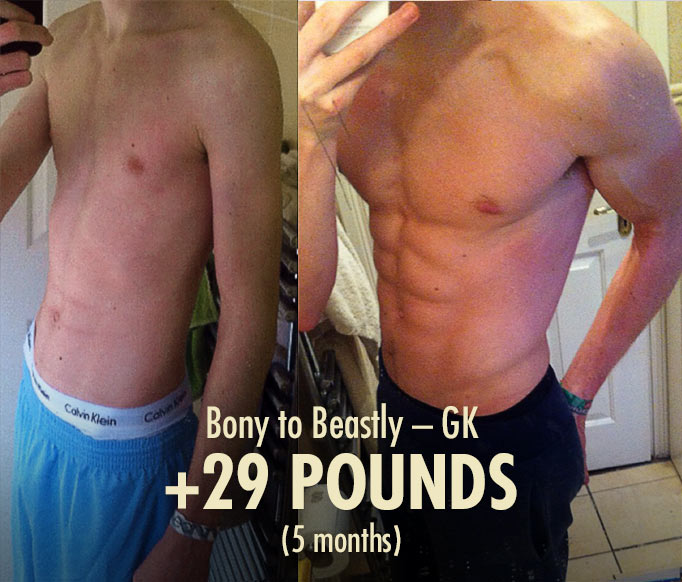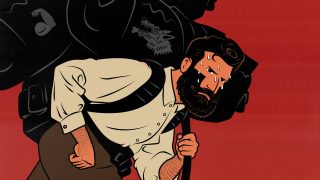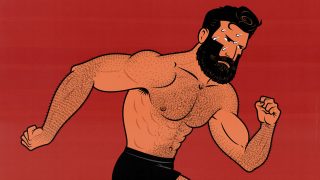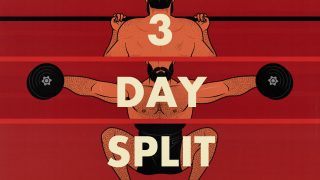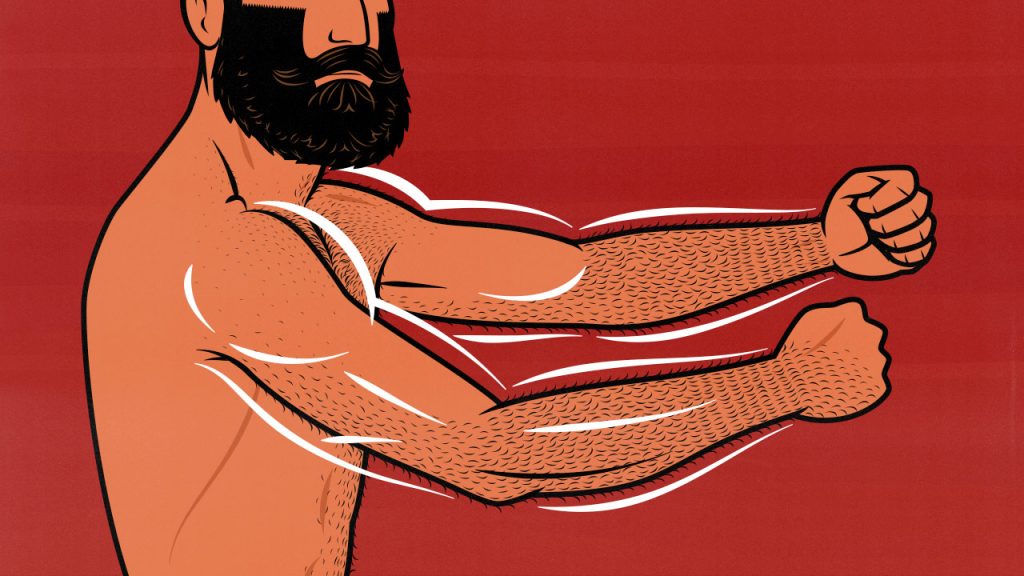
The Best Beginner Arm Workout
Do beginners even need an arm workout? Think of programs like Starting Strength and StrongLifts 5×5. Neither of them have any arm exercises, let alone a dedicated Arm Day. That can cause your arms to lag behind the rest of your muscles.
It’s also common for beginners to jump into advanced bodybuilding routines that aren’t very good for novices. The training splits are needlessly complicated, the arm workouts are total overkill, and the routines still aren’t ideal for building bigger arms.
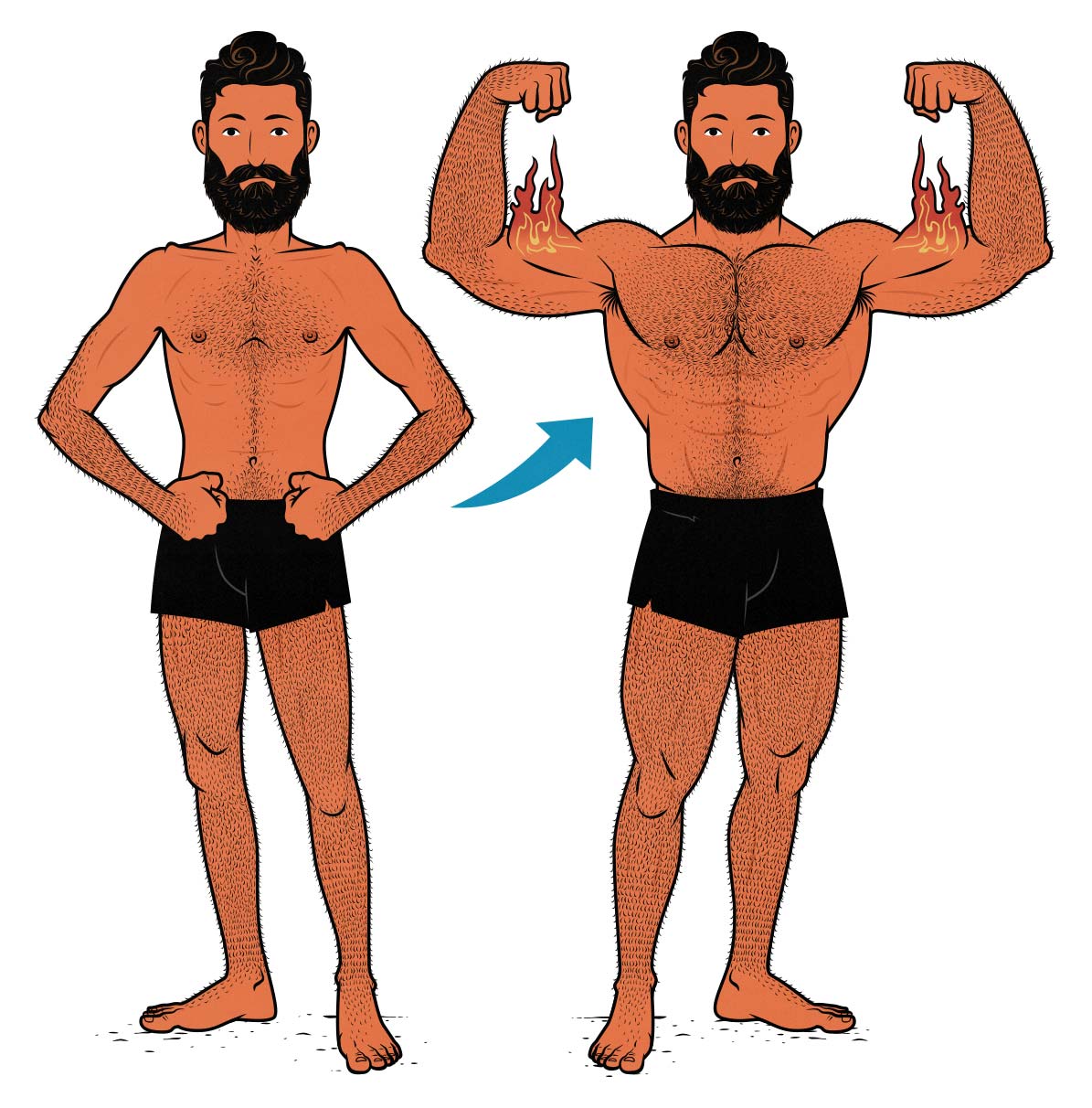
Should Beginners Isolate Their Arms?
It’s common for beginner programs to neglect arm training. Think of programs like Starting Strength and StrongLifts 5×5. Neither of them have any arm exercises.
The first argument is that compound lifts are enough to stimulate your arms. The idea is that you can build bigger biceps by rowing and bigger triceps by pressing. And that’s true, to a point. Your arms will grow—but at half the pace of your other muscles (study).
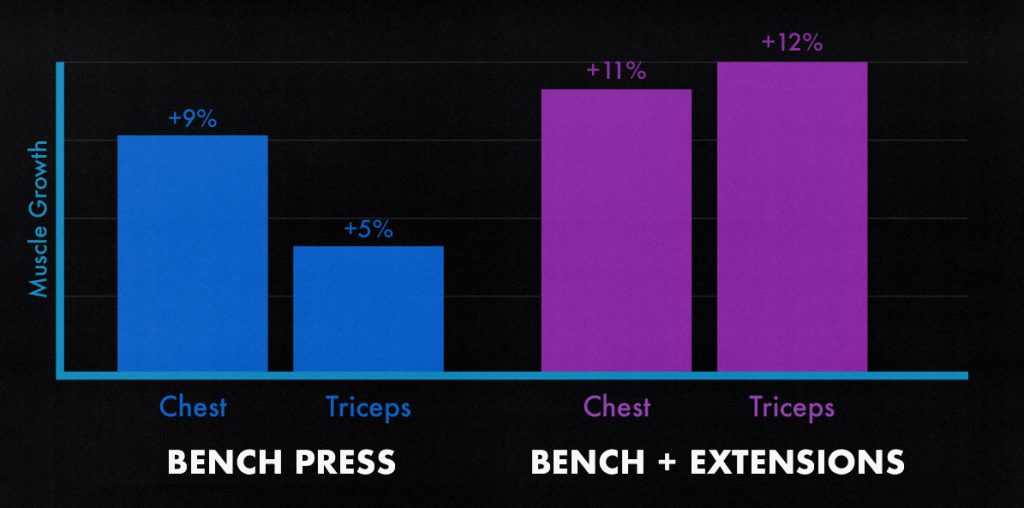
If you want to build bigger arms, you should add some dedicated arm exercises to your workout routine. All you need are biceps curls, triceps extensions, and perhaps some lateral raises for your side delts.
The second argument is that beginner workouts should be simple—minimalistic. The idea is that lifting weights is already complicated enough. And that’s true, too. But biceps curls, triceps extensions, and lateral raises are incredibly simple.
Basic Arm Muscle Anatomy
Your biceps flex your arms. They work alongside your brachialis and brachioradialis. These muscles attach in different places, flexing your arms in slightly different ways.
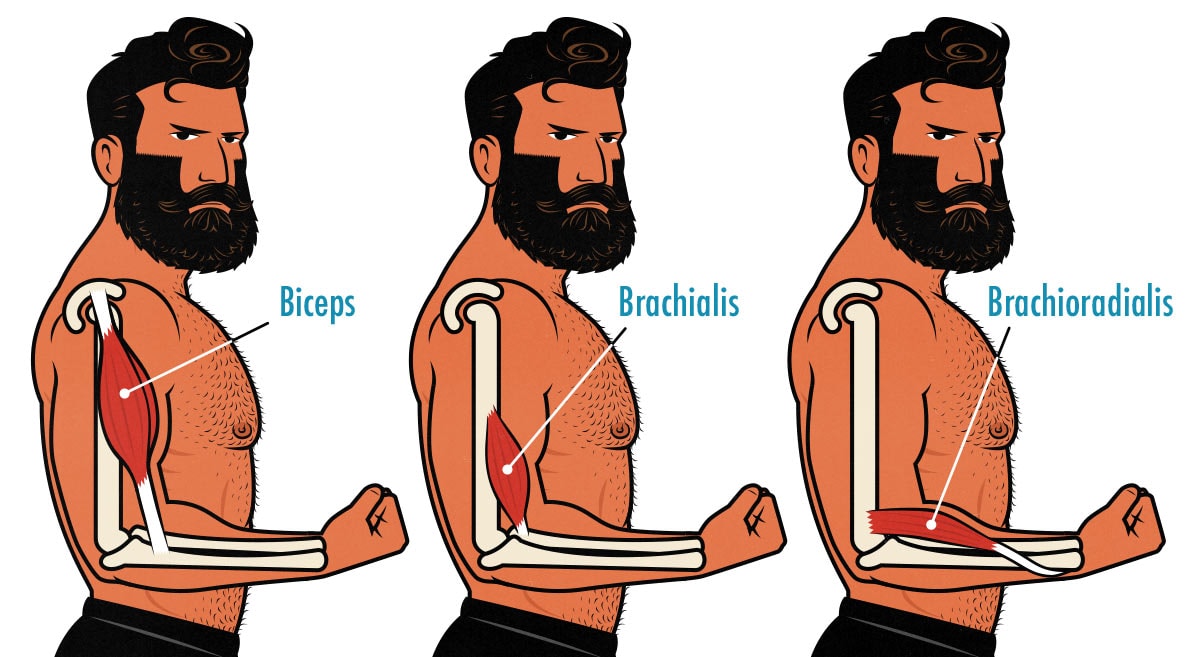
- Your biceps are good at flexing your arms while keeping your shoulders from drifting backwards. This is great while carrying things in front of you. You can train them with biceps curls.
- Your brachialis muscles are good at flexing your arms while your shoulders are moving. This is great for pulling things toward you. You can train these with biceps curls, but they also work during compound pulling exercises.
- Your brachioradialis muscles are good at flexing your arms when you’re using an overhand grip. You can train them with biceps curls, but they also work during pull-ups and pulldowns.
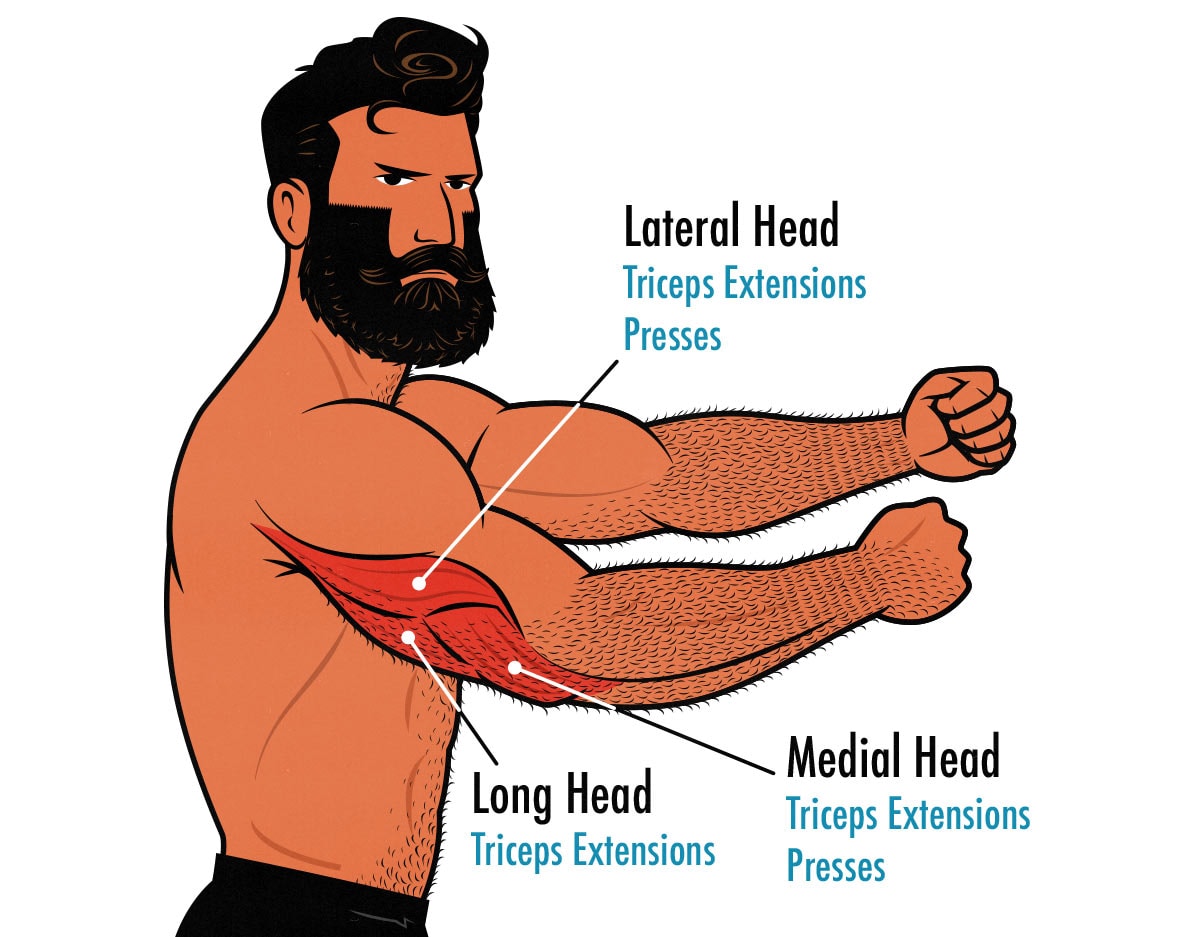
Your triceps extend your arms. They get their name from the fact that they have three heads. The long head crosses the shoulder joint, so if you rely on pressing movements, it will lag behind. All three heads extend your arms, though, so you can train them all with triceps extensions.
Your forearm muscles can be isolated, too, but that’s overkill for right now. Biceps curls already work the biggest muscles in your forearms (brachioradialis and forearm flexors).
The Best Beginner Exercises
Biceps Exercises
The best biceps exercise for beginners is the biceps curl. You can curl with dumbbells, a barbell, or a cable. Dumbbell curls make for a great default because they allow your wrists to rotate freely, reducing stress on your tendons and joints.
Here’s Marco teaching the dumbbell curl:
When you get more advanced, you can experiment with more difficult variations:
- Barbell curls are simple, stable, and easy to add weight to. You can do them with a straight barbell or an angled curl bar. Curl bars tend to be easier on the elbows.
- Incline curls are dumbbells done while reclining on an incline bench. They stretch the long head of your biceps at the shoulder joint. That stretch slightly improves muscle growth (full explanation).
- Preacher curls are done with your upper arms resting on an incline, challenging the short head of your biceps under a deep stretch.
- Lying Dumbbell Curls challenge your biceps through an even deeper range of motion, stimulating a tremendous amount of muscle growth. However, they demand more shoulder mobility and stability. I love these so much.
Triceps Exercises
The best triceps exercise for beginners is the overhead extension (study). It’s easy to learn, works all three heads of your triceps, and gives the oft-neglected long head the attention it deserves.
Here’s Marco teaching the overhead triceps extension. He covers cable variations, dumbbell variations, and variations for people with poor shoulder mobility:
Overhead extensions work your triceps through the deepest range of motion. They will always be powerful. You can do them until your beard turns white and reaches your ankles.
Still, there are other good triceps exercises:
- Close-grip bench presses and push-ups are great for the medial and lateral heads of your triceps. They work great if you do them before overhead extensions.
- Skull crushers are good for improving your bench press strength and triceps size. They demand less shoulder mobility than overhead extensions.
- Triceps pushdowns are super simple, easy on the elbows, and don’t require any shoulder mobility. They’re fantastic for beginners. The only downside is that they don’t stretch the long head as much as overhead extensions and skull crushers.
Shoulder Exercises
The best shoulder exercise for beginners is the lateral raise. Pushing exercises train your front delts, and pulling exercises train your rear delts. The only problem is that they leave your side delts to wither by the wayside. That’s where lateral raises come in.
Here’s Marco teaching the lateral raise:
There are more advanced variations of the lateral raise, such as the side-lying lateral raise. You can also bulk up your side delts with the overhead press. For more, we’ve got an article with more advanced shoulder exercises.
Rest Times & Giant Sets
You could rest for 1–2 minutes between sets. That’s enough time for your arms to recover most of their strength but not so much that your workouts turn into endless slogs.
The most efficient way to train your arms is with a giant set, like so:
- Biceps curls
- Rest 30 seconds
- Triceps extensions
- Rest 30 seconds
- Lateral raises
- Rest 30 seconds
If you do 3 rounds of that, you can blast through an entire arm workout in under 10 minutes. It keeps your workouts short and dense while still giving each muscle plenty of time to recover.
Here’s a tutorial video where I explain supersets and giant sets. You can see me doing this giant set at 2:03. I’m doing the barbell variation of the exercises (using a curl-bar and weight plates).
You Can Train to Failure
Most research shows that beginners can build muscle slightly faster by taking some of their sets all the way to muscle failure (research breakdown). We don’t usually recommend lifting to failure on big compound exercises like squats, bench presses, and deadlifts, but you can go quite a bit harder isolation exercises like biceps curls, triceps extensions, and lateral raises.
Arm exercises are safe to take to failure. They’re easy to recover from. I recommend pushing close to failure most of the time, and going all the way to failure on the final set of each arm exercise.
The Beginner Arm Workout
Intermediate lifters with lagging arms can often benefit from having a dedicated Arm Day focused purely on arm exercises. If that’s what you want, click that link.
However, beginners tend to get better results from doing their arm exercises at the end of full-body workout routines. That way, they can train their arms 3x per week, keeping their biceps, triceps, and shoulders growing at full speed all week long.
A good beginner arm workout looks something like this:
| Exercise | Sets | Reps Range |
|---|---|---|
| Dumbbell Biceps Curls | 3 sets | 8–12 reps |
| Dumbbell Overhead Extensions | 3 sets | 8–12 reps |
| Dumbbell Lateral Raises | 3 sets | 8–12 reps |
Dumbbells make for a great default, but you can also do the exercises with barbells, cables, or exercise machines.
Alright, that’s it for now. If you want a full beginner workout routine that perfect for bulking up and building bigger arms, check out our Bony to Beastly Program. We’ll walk you through the process of gaining your first 20–30 pounds. It includes a 5-month workout program, a full muscle-building guide, tutorial videos teaching every exercise, a recipe book, and personal coaching from us in our online community.


